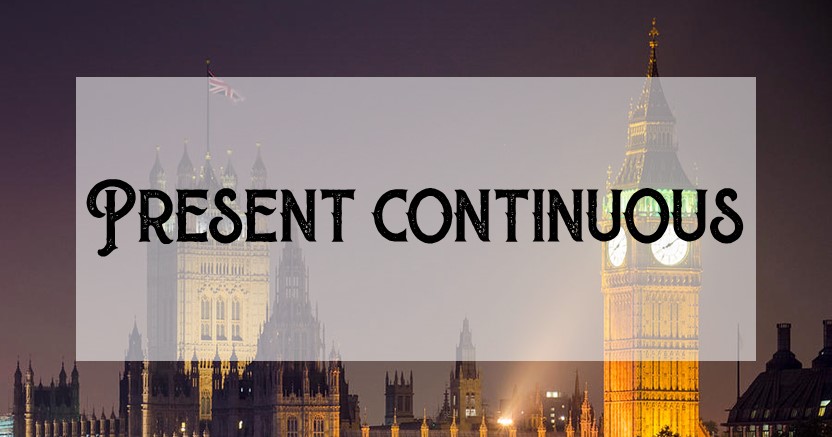The present continuous is one of the twelve verb tenses that exist in English. Since it is one of the most used on a day-to-day basis, it is very important to know when it is used and what its structure is like in order to use it correctly.
In this post we will learn the present continuous at level II, so the explanations are in English and the examples shown have an intermediate difficulty.
Uses of the present continuous
We use the present continuous for:
1. Actions that are happening at the very moment of speaking.
- Anthony is reading a book in the living room right now.
- They are filming the new movie as we speak.
- My grandparents are attending church services now.
- The cats are napping in the sofa at this very moment.
2. Expressing situations that are happening currently but not at the moment, or that we feel are temporary or not lasting.
- Paul is not speaking with Carl for the time being.
- Arturo is always arriving late lately.
- Susan is trying a new diet at the moment.
- My best friend is dating his ex again for some reason.
3. Talking about specific future plans that are decided and will happen.
- We are going on a trip to Disneyland Paris on October.
- She is not coming to the party we celebrate tonight.
- I am going to the concert in spring, unless COVID happens again.
- Charlie is auditioning for a role in the series next Monday.
Structure of the present continuous
Affirmative sentences
Subject + ‘to be’ in present simple + verb with -ing + rest of the sentence
- I am listening to my favourite podcast in my room now.
- The writer is releasing her new book soon.
- Eloy is playing with his new monkey toy right now.
- The boys are playing online at the moment, do not bother them.
To express the current actions it is common to use expressions like ‘now’, ‘right now’, ‘at the moment’ or ‘as we speak’. Additionally, when using present continuous to talk about the future we can specify the time or date of these future plans.
Note: We usually use contractions for the auxiliary verb ‘to be’ when not using a formal register.
- I am eating ice cream right now. = I’m eating ice cream right now.
- She is planning her revenge as we speak. = She’s planning her revenge as we speak.
- They are studying in class at the moment. = They’re studying in class at the moment.
Negative sentences
Subject + ‘to be’ in present simple + not + verb with -ing + rest of the sentence
- I am not listening to my favourite podcast in my room now.
- The writer is not releasing her new book soon.
- Eloy is not playing with his new monkey toy right now.
- The boys are not playing online at the moment, you can come in.
Note: We usually use contractions for the auxiliary verb ‘to be’ when not using a formal register.
- She is not planning her revenge right now. = She isn’t planning her revenge right now.
- They are not studying in class at the moment. = They aren’t studying in class at the moment.
Interrogative sentences
Auxiliary verb 'to be' + subject + verb with -ing + rest of the sentence + ?
- Am I listening to my favourite podcast in my room now?
- Is the writer releasing her new book soon?
- Is Eloy playing with his new monkey toy right now?
- Are the boys playing online at the moment? I need to talk to them.


No hay comentarios:
Publicar un comentario